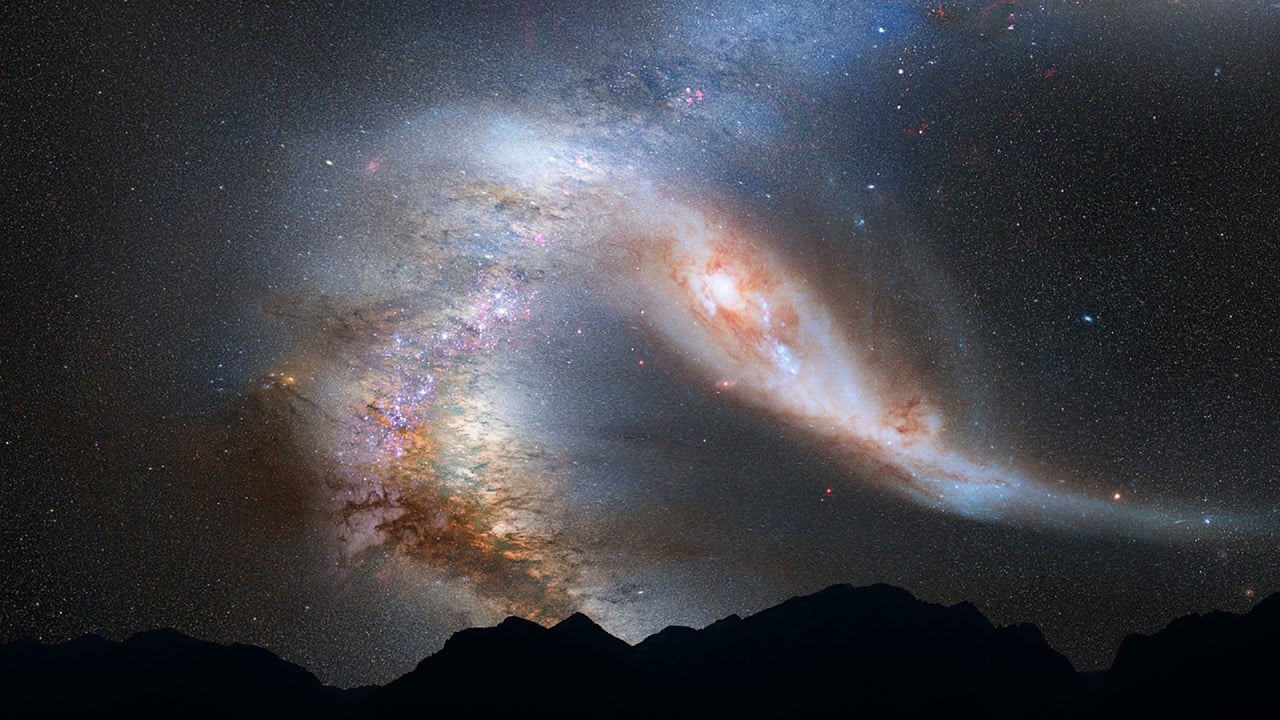Scientists have known for a long time that galaxies grow over time, and it appears as if our own Milky Way is expanding by roughly 500 meters per second – growing by a light year every 600000 years.
The Milky Way has already devoured hundreds of smaller galaxies over its lifetime, and to this day continues to absorb the dwarf satellites that surround us. While expanding outward is the newly discovered way in which our galaxy expands, the Milky Way is also “expanding” in a way, by forming new stars from the gas that is already inside. This new study shows that galaxies grow outward over time, despite the fact that the majority of new stars form from the plane or central bulge of a spiral galaxy of our own.
As mentioned above, galaxies like the Milky Way often expand by forming new stars, and we can tell when these new stars formed in several ways. If we see the slow collapse of a cool cloud of gas, a nearby supernova that pushes nearby gas clouds to greater densities, or a gravitational interaction with a nearby mass, that’s a pretty good sign that the Milky Way is expanding by forming new stars.
While scientists have known that Galaxies do expand, it was previously thought that the actual radius of the Milky Way wouldn’t expand unless an outside mass was absorbed into it. This new study throws that accepted knowledge into uncertainty, however, as it appears that the spirals in our galaxy are slowly growing continuously over time – even independently of outside matter being sucked in.
The research that challenges these preconceived notions comes from the research of Martínez-Lombilla, Ignacio Trujillo Cabrera and Johan H. Knapen of the Instituto de Astrofísica de Canarias. While it’s difficult to view the outskirts of our Milky Way that are a huge distance away, the team managed to look at other spiral galaxies that are quite similar to our own – specifically looking at the edges of edge-on galaxies. One of the most important galaxies that was looked at is NGC 4565 – also known as the Needle Galaxy.
The researchers measured the objects in the galaxy with three different wavelengths of light – optical, ultraviolet, and infrared – using this technology to track the colors and motions of the stars located at the edges of the galaxy. This information gave the team the confidence they needed to concur that the galaxies were slowly expanding – even when these outskirts weren’t picking up any sort of new planets or smaller galaxies around the edges.
With the knowledge that the NGC 4565 was expanding, we could infer that our own was expanding as well. The Milky Way will continue to grow slowly in size for roughly 4 billion years – at which point it will merge with Andromeda. With the merger, the extents of both galaxies will only be around 7% larger in size. However, it will also definitely change the size and distribution of our stars to a great degree.
Even if we weren’t to merge with Andromeda, however, this new information suggests that the Milky Way – and pretty much any other Galaxy – will slowly expand over time, adding a new theory that flies in the face of our understanding of astronomical expansion. While there’s not much of a practical application for the information at this point in time, it does give us more knowledge that may come in handy later as we start to move further away from Earth with our expeditions.





